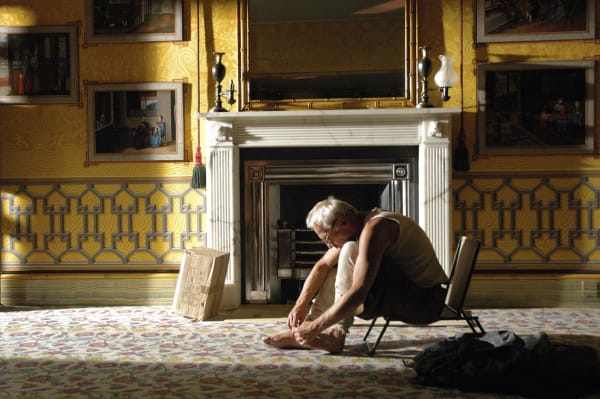Fiona Tan: A Lapse Of Memory
Held at The Royal Institute of British Architects.
A confused, old man – Henry – lives alone in a deserted building which looks a lot like a palace. He has not been outside in years. His days pass as if removed from time, in voluntary exile from the rest of the world. The camera registers his simple daily routine and his careful but eccentric rituals. Henry’s background is unclear; his appearance is that of a European but he has many Asian habits. As much he resembles to a large extent the building which he occupies.
Indeed Henry is only one of the protagonists of this film. The second protagonist is the building itself: the Royal Pavilion in Brighton (UK). Built in 1815 under the auspices of King George IV. It is one of the best preserved examples of Chinoise architecture and design in the world. Whilst the façade seems a true copy of classical Indian architecture, the exorbitant interiors are decorated in Chinese/Japanese style. However both the king and his architect never set foot in Asia. And as such the pavilion is a fantasy, a remnant from colonial times built purely from the imagination. Extravagant interiors are revealed in passing, whilst the viewer slowly becomes privy to a day in Henry’s withdrawn life. The steady pace of filming and editing emphasize this work’s timelessness.
In a spoken monologue a play unfolds between reality and fiction. This parallel tale sketches several possible scenarios – sometimes independent of the image, sometimes interwoven with it. Word and image, movie and documentary entangle and point beyond the boundaries of ‘East’ and ‘West’.
This major installation is presented by Frith Street Gallery in association with the Royal Institute of British Architects. Kindly supported by the Mondriaan Foundation.



